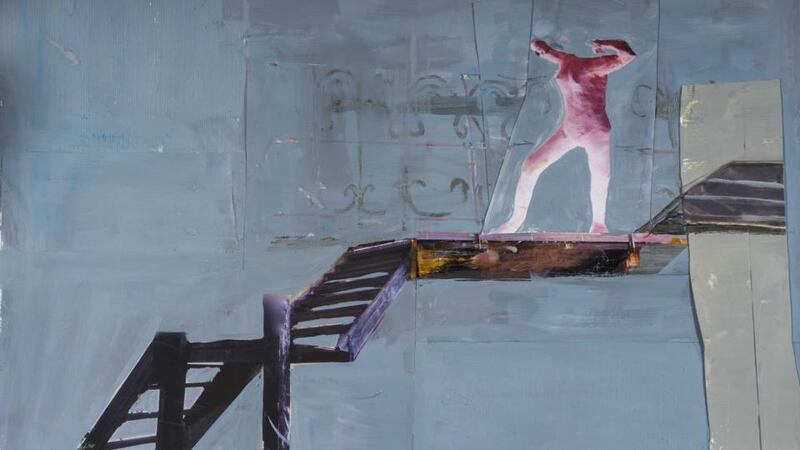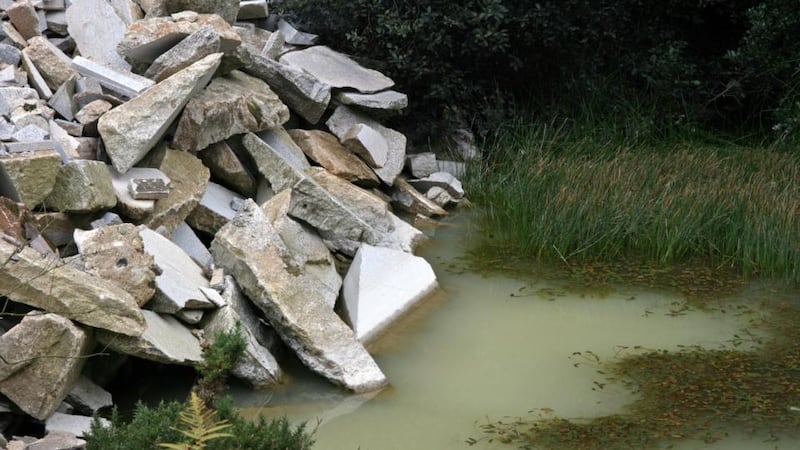Sean Lynch is one of a handful of Irish artists to have studied at the Städelschule in Frankfurt am Main in Germany. They don't give you a degree or anything like it at the Städelschule, and they don't charge fees. But such is its reputation that the fact that you've come through it is more important than any formal qualification.
It's fair to say that the Turner Prize-winning conceptual artist Simon Starling, a professor at the school when Lynch was there, has been a significant influence on him. That said, Lynch was set on a particular artistic course by the time he went to Germany, having studied first in Limerick. And, over the last 10 years or so, he has proved to be a fantastically inventive and industrious artist with a distinctly independent mindset. At the core of his practice is a kind of cultural history or archaeology, a research process that uncovers lost, forgotten or deliberately obscured or erased aspects of objects and events of cultural significance. He has tracked equipment from the DeLorean car factory in Belfast to the seabed off Co Galway, for example, and traced the 1974 Irish journey of German avant-garde artist Joseph Beuys.
His work can take the form of documentary material, publications, photographs, video and sculptural installations, all contributing to stories that are historically illuminating and offer an alternative take on even the most familiar aspects of the past. All of which makes him a good choice to represent Ireland at this year's Venice Biennale, running through the summer from May 9th.


For the first time, as well, the Irish exhibition will be in the central Arsenale section of the show, rather than at a satellite location. EVA director Woodrow Kernohan is the curator, and Limerick City of Culture 2014 director Mike Fitzpatrick is commissioner.
Lynch's Venetian project is titled Adventure: Capital and promises to take the visitor "from myth to minimalism" using narratives, sites and objects from in and around Ireland and Britain.
From Greek river gods via public art and abandoned quarries, to a traffic roundabout, Lynch will observe ideas of cultural and monetary worth through the lens of his own brand of cultural anthropology. Incidentally, another of his projects, The King of Keshcorran, made with Michael Holly and local historian Liam Byrne, is at Roscommmon Arts Centre until February 13th.
Sean Lynch at Venice is something to see if you can. If not, thanks to the Art Council’s* welcome recent policy initiative (which was very successful in the case of the last Irish representative at the Biennale, Richard Mosse), you can catch it when it tours in Ireland subsequently.
More essential viewing
There are a number of shows scheduled for this year that may not necessarily capture the headlines but are more than worth marking as essential viewing.
Janet Mullarney, one of our leading contemporary sculptors, has her first solo show in Ireland in five years. My Minds I will open at the Highlanes Gallery in Drogheda on January 30th and go on to the Butler Gallery, Kilkenny in October. An installation with a strongly theatrical feel, it will feature relatively small figures. Mullarney's intention is to direct us towards the inner, personal, subjective world beyond the immediate, external reality.
Gerda Frömel, another great sculptor, was born in Czechoslovakia to German parents but lived in Ireland from 1956 until her death in 1975. She is the subject of a timely retrospective at Imma, which opens on April 10th. Frömel, an artist of impeccable sensibility who occupied the sometimes contentious ground between figuration and abstraction without a hint of contradiction, has long been underrated, even though during her lifetime her peers held her in extremely high regard. After Imma, the show will travel on to the FE McWilliam Gallery and Studios in Co Down.
Intriguingly, while Cork's Crawford Gallery bills its headline summer exhibition Sean Scully: Figure Abstract as the artist's only museum show in Ireland marking his 70th birthday, on May 12th the National Gallery of Ireland launches a two-decade (1980s and 1990s) survey of his work, Sean Scully, curated by director Sean Rainbird, which rounds up paintings from Tate, Imma, the English Arts Council and the Kerlin, plus a private collection. It also features one new "window" painting and a new series of photographs.
First World War
In the midst of first World War commemorations, Chloe Dewe Mathews’s
Shot at Dawn
, which opens at Imma in October, is a salutary reminder of yet another aspect of its horrors. Her photographs depict some of the sites where British, French and Belgian soldiers were executed, or held immediately prior to their execution by their own side. Once reviled, these unfortunate men have only quite recently come to be regarded as victims of a cynical policy memorably encapsulated much earlier by Voltaire in
Candide
as “
pour encourager les autres
” and elaborated in Stanley Kubrick’s superb film
Paths of Glory
.
Jackie Nickerson's Uniform at the National Gallery of Ireland from October 8th, co-curated with Brendan Rooney, juxtaposes her superb portraits of agricultural workers in several southern African countries, published in her book Terrain, with paintings from the gallery collection. The show prompts us to question the way we identify and place individuals.
Portraiture is the subject of another welcome National Gallery exhibition from October 24th. At a Glance is an exploration of the portraits of John Butler Yeats. Normally eclipsed by his offspring, and prone to dissipate his creative energy in too many directions, Yeats père was a talented and sympathetic draughtsman and portraitist whose sitters included numerous significant figures, from Lady Gregory to John Millington Synge.
And look out for Amanda Coogan at the RHA from September 4th and Ailbhe Ní Bhriain there from November 13th.
*This article was ammended on 16/01/2015
adunne@irishtimes.com










